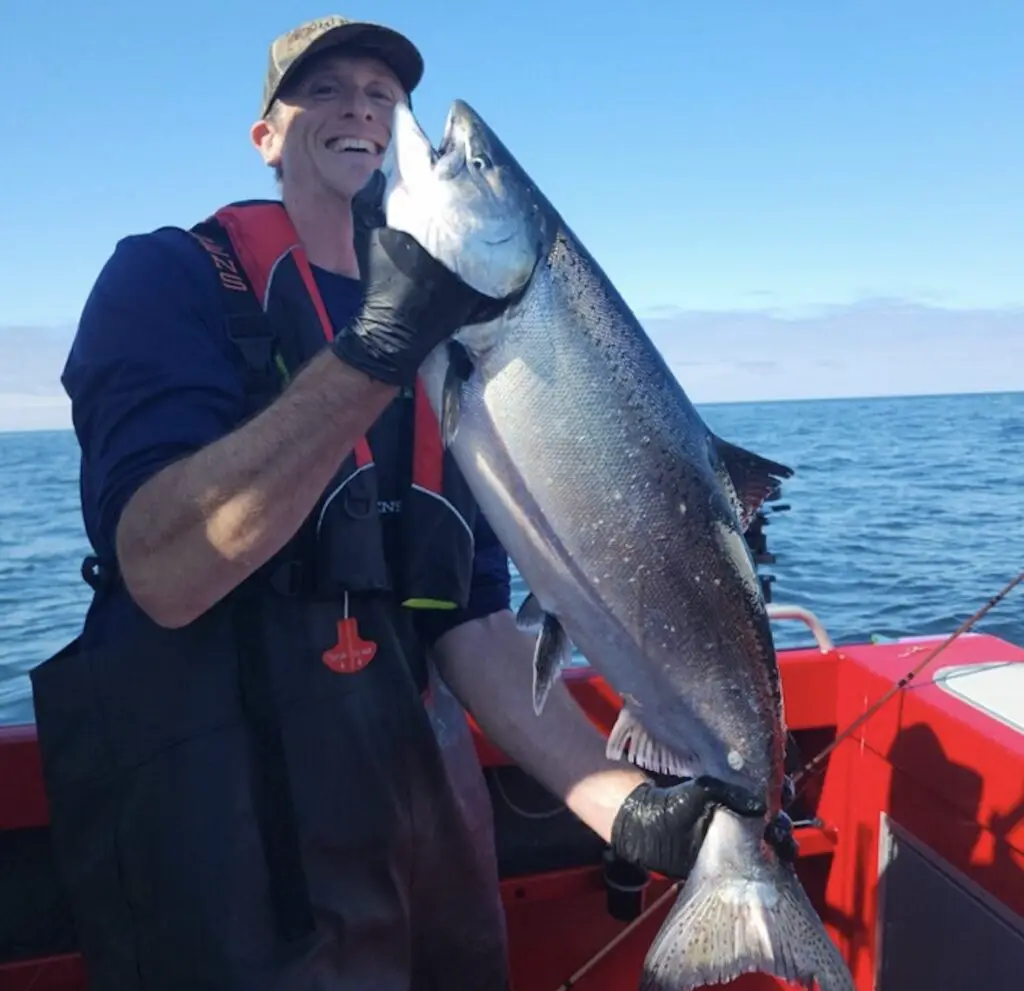
If you’ve been a follower of our YouTube channel (you should be!), you know that we ran out to Neah Bay not long after the June salmon opener for a single-day incredible turn-and-burn trip. And on that trip, we hooked into 8 quality chinook but lost 6 of those, and only landed 2.
I’ve recently made some changes and have gone 11 for 11 on quality chinook since those changes. This blog post is to highlight what exactly I changed.
You can catch up on our trip in the above video.
For starters, the context I’m assuming is important. We are talking about trolling gear for salmon, and we are talking about flashers and spoons specifically.
I’m a huge believer in spoons, they are incredibly simple and very effective on actively feeding chinook.
Spoons have a problem that hoochies and bait don’t have though. They are a fixed leverage point that a big chinook in particular can use to dislodge a barbless hook.
Before we get into the changes I made, there are a few things I already do that I think are important for not losing chinook on spoons and flashers while trolling.
- I keep the motor in gear after we hook up on a quality chinook or any salmon for that matter. I don’t want that fish to run at the boat faster than an angler can retrieve line and get the slack out. Keeping the motor in gear at the same speed can be a major factor.
- I use the wonderful flasher releases from Coldwater Strong. Not only do these flasher releases make fighting fish on flasher gear more fun, but they also remove the flasher as a leverage point a big chinook can use to dislodge the hook.
I describe more details on all of this in a video I recently published on how to catch chinook that are actively feeding, linked above.
Okay, so let’s get to what changes I made, starting with the gear:
- I started adding a split ring and barrel swivel between my spoon and my hook. I also make sure I use at least a 4/0 hook, and in particular the big river gamakatsu 4/0 hook on my 3.0 spoons.
You will want a tool to help you install the split ring and barrel swivel:
2. I started being more consistent about making sure whoever picks up that rod gets a decent hook set on that fish. Chinook have very hard jaws and you can end up in a situation where a hook has partially penetrated the jaw, but not quite far enough to hold that chinook during the series of violent head shakes it will make to get free.
3. I also started being consistent about making sure that chinook runs away from the boat. No more reeling that fish right to the boat. If it’s a quality king salmon, I want that fish to run away from the boat. And sometimes that means I will back the drag off until that chinook is peeling line.
You know what a chinook that’s peeling line is not doing? It’s not doing those headshakes that typically result in a big fish being lost under pressure.
A salmon running away from the boat also allows me to completely prepare the boat for landing that chinook rather than it swimming to the boat too early and tangling in the lines.
Another thing a fish running away from the boat accomplishes, is that it tires the salmon out. It’s so much easier to lift a salmon to the surface of the water and guide it to the net when it’s tired vs full of spunk and energy.
Hopefully a few of these tips help you, if you run into a bad streak of losing quality chinook like I did.
Might also want to put a slight bend in the hook shank. I would shy away from changing hook size, as larger hooks definitely change the action on light spoons.
While that’s true, I think the 4/0 Gami is perfect for #3 size spoon. And the fish agree 😎
Thanks.
Thank you for sharing what’s working for you. Any recommendations on size of split rings and barrel swivel to use with 3.0 spoons?
If there’s a size rating I go with 30-40 lbs on both.